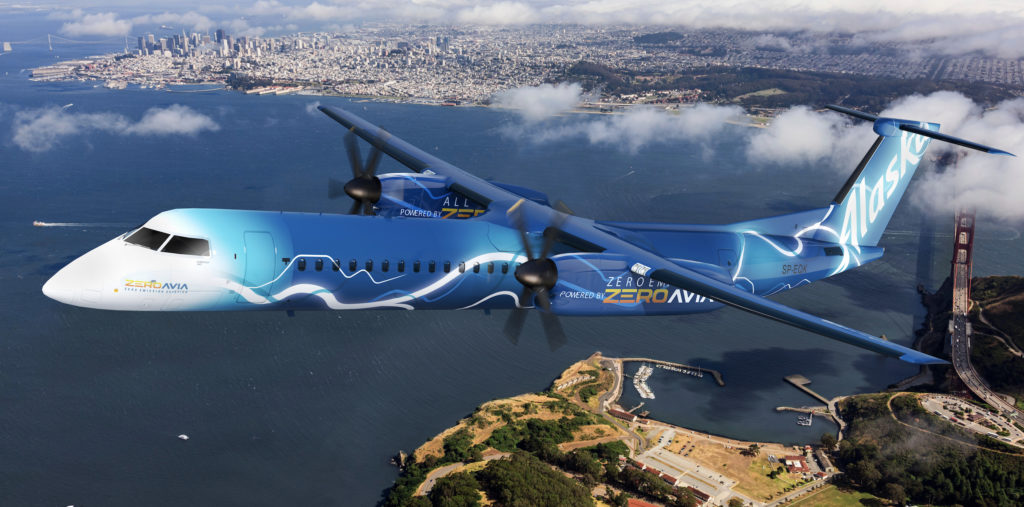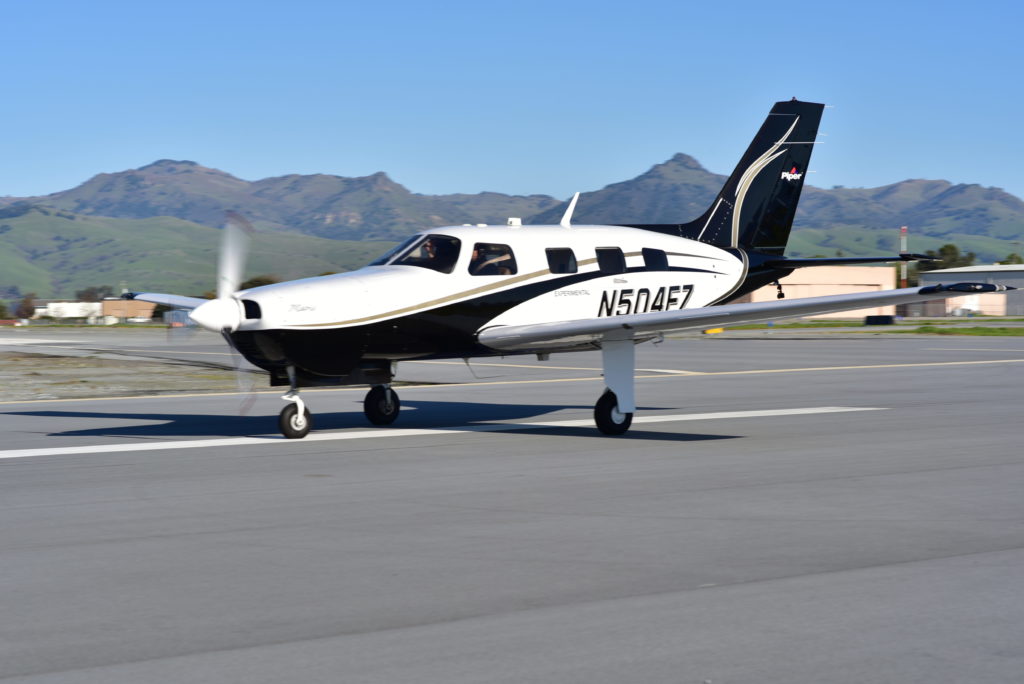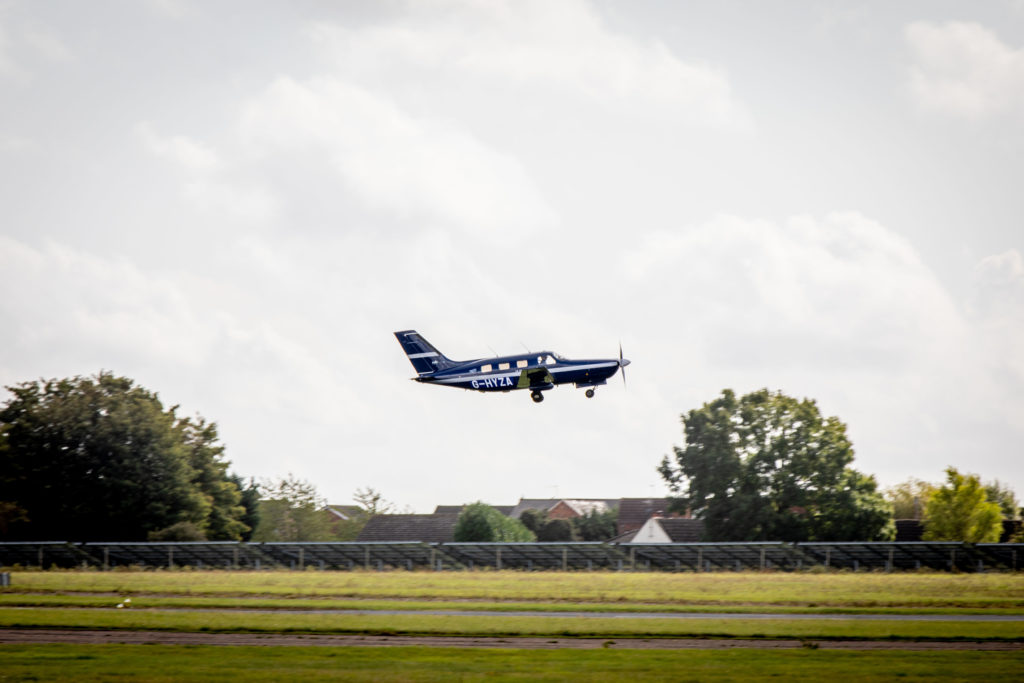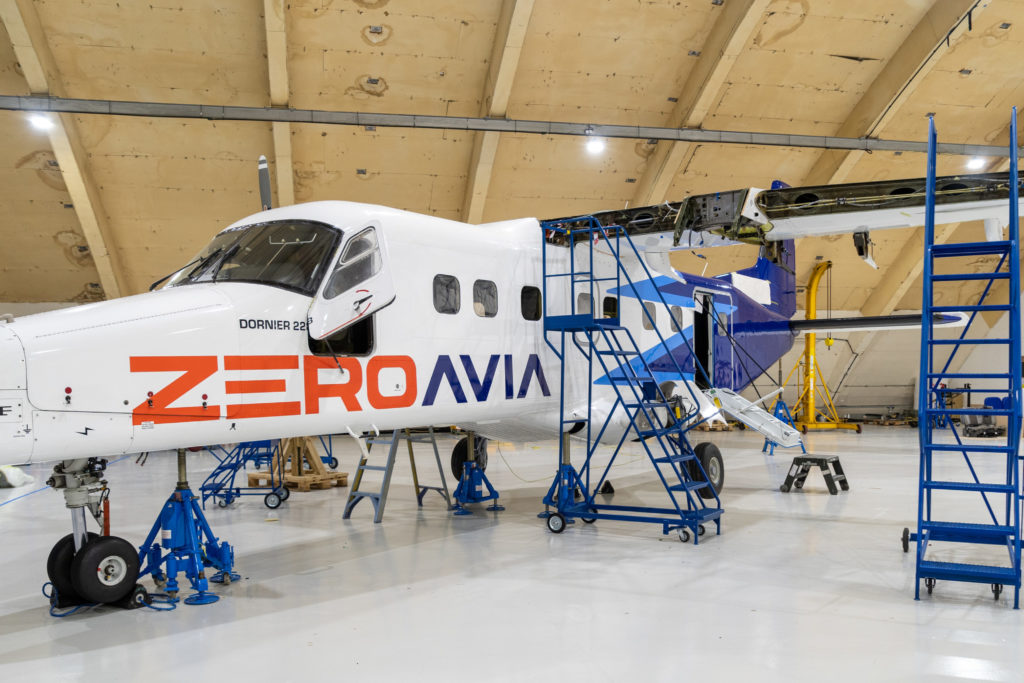Estimated reading time 18 minutes, 26 seconds.
On the eve of the COP26 UN Climate Change Conference in Glasgow, California- and U.K.-based ZeroAvia announced two new partnerships to bring 50- to 80-seat hydrogen-electric regional aircraft to market by 2026.
As airline and aircraft manufacturers look beyond sustainable aviation fuels (SAF) to reduce greenhouse gases and meet climate targets, investment in the zero-emission hydrogen fuel cell powertrains is gaining momentum.
First, ZeroAvia announced a memorandum of understanding (MOU) on Oct. 25 with MHI RJ Aviation ULC (MHIRJ), which was created in 2019 to provide aftermarket support for 1,300 CRJ aircraft flying with 140 operators, which fly 100 million passengers a year.

The first task for MHIRJ engineers will be to help ZeroAvia develop and certify its 600-kilowatt ZA600 hydrogen fuel cell propulsion system for 10- to 20-seat aircraft by 2024, as well as cooperate “in developing hydrogen-electric propulsion for regional jet applications.”
MHIRJ was created after Mitsubishi Heavy Industries bought the hugely successful CRJ regional jet program from heavily indebted Bombardier in 2019.
Next, Alaska Air Group (the parent of Alaska Airlines and Horizon Airlines), announced it was investing in ZeroAvia company and would collaborate to scale ZeroAvia’s power train technology to produce the 2,000- to 5,000-kilowatt ZA2000 engine, capable of powering the airline’s 76-seat De Havilland Dash 8-400 turboprop. The deal also includes options for up to 50 retrofit kits.
Taken together, the two collaborations represent a huge vote of confidence for ZeroAvia’s product strategy.
It is the first time a major regional aircraft OEM with a large fleet announced its engineering support for a hydrogen-electric certification program, and the first time a large U.S. airline made a strategic commitment to retrofit its regional aircraft fleet with zero emission propulsion systems.
Climate Targets
The aviation industry currently produces about two percent of all human-induced carbon dioxide (CO2) emissions and is responsible for 12 percent of CO2 emissions from all transportation sources, according to the Air Transport Action Group.
The development of hydrogen-fueled aircraft has attracted more attention as the airline industry looks beyond sustainable aviation fuels (SAF) for ways to meet its climate targets, with recent advances in hydrogen fuel cell technology confirming that zero emissions flight is actually attainable.
The electrification of aircraft propulsion started more than a decade ago when Slovenia-based Pipistrel launched series production of the two-seat Taurus Electro G2 motor glider in 2011, and Alpha Electro electric trainer in 2015.
Now, investments are increasing in the traditional air transport industry, which sees green technologies playing a role as it tries recover from the Covid-19 downturn and achieve net-zero carbon emissions by 2050 at the same time.
The primary benefits of electric powered aircraft include lower maintenance, energy costs, and greenhouse gas emissions, with most of the electric conventional takeoff and landing (eCTOL) aircraft developers primarily focused on battery electric and hybrid-electric power solutions. That is until new hydrogen-electric aviation companies like ZeroAvia appeared.
First Mover
ZeroAvia came out of stealth in the summer of 2019, when founder and CEO Val Miftakhov publicly revealed he was test flying an electric-powered 2013 Piper Matrix six-seat aircraft in Hollister, California.

“Hydrogen provides three times higher specific energy content compared to jet fuel, and is over 100 times higher than the best batteries today, making it the only viable option for large scale zero emission aircraft,” Miftakhov stated recently in a press release.
The initial test flights with the Piper Matrix in California in 2019, and a six-seat Piper Malibu in the U.K. in 2020, were both battery powered.
Then, on Sept. 25, 2020, Miftakhov took off in the Malibu from Cranfield Airport to make the world’s first hydrogen fuel cell powered flight of a commercial-size aircraft. The aircraft carried out an eight-minute flight and reached an altitude of 1,000 feet and a speed of 100 knots.
The company gained significant tailwind in December 2020 when ZeroAvia secured $37.7 million in new funding, bringing total funding since inception to $49.7 million.
The next major milestone came in July 2021, when ZeroAvia successfully ground tested the 600-kW ZA600 powertrain in Hollister on a mobile ground testing platform mounted on an eight-wheel heavy-duty Oshkosh M977 HEMTT military truck.
The hydrogen-electric powertrain system ZeroAvia is developing includes electric motors, power and thermal management systems, a fuel cell, compressors, and gaseous or liquid hydrogen containers.
The 600-kW powertrain under development is going to incorporate PowerCell MS-100 fuel cell systems, but ZeroAvia is open to evaluating other technologies, such as the Hyzon Gen3 fuel cell stack, which is being used on hydrogen-powered heavy-duty trucks, buses, and coaches.
Recently, Airbus presented three concept hydrogen-electric aircraft designs that would start entering service in 2035, but Sergey Kiselev, ZeroAvia’s vice president for Europe, said: “This is not ambitious enough for us. We are trying to fly at the end of this year and certify the powertrain for the 19-seat aircraft in 2024, and do the same thing for the 50-plus seater in 2026.”
Next year, ZeroAvia will be moving to full-size prototype manufacturing of its 2,000-kW engine for demonstrations, with the 50- to 80-seat market being the next focus. The company made a strategic decision to skip the 20- to -50-seat market at this time.
Kiselev told Skies that 10- to 20-seat aircraft will be able to utilize gaseous hydrogen using advanced high-pressure tanks, but larger 50- to 80-seat regional aircraft will require the use of liquid hydrogen, which must be stored in pressurized tanks at cryogenic temperatures — which is a technological requirement challenging all transportation modes.

For its part, ZeroAvia favors fixed hydrogen tanks that are incorporated into the aircraft during the retrofit process, while competitors like Universal Hydrogen favor modular liquid hydrogen tanks that it would also refill.
MHIRJ Collaboration
MHI acquired the CRJ program on June 1, 2019, to support the entry into service of the now “paused” Mitsubishi SpaceJet (previous MRJ) regional jet and diversify its aerospace business portfolio.
At the time of acquisition, only 15 CRJ900s were still on order to be filled before MHIRJ was required to “pause” production because the CRJ final assembly line could no longer be accommodated within the Airbus A220 factory at Mirabel International Airport.
Under the damper of the pandemic, MHI started looking at solutions and new ideas on how to regrow the market and work towards taking back the skies, stated MHIRJ Aviation president, Hiro Yamamoto, earlier this year.
When MHIRJ’s engineering team was supporting ongoing CRJ production, it had little time to consider other businesses, but “in the last 12 months, we’ve paused CRJ production and for the first time in 30 years we can actually take the capability, the expertise, the maturity of this team, and our methods and procedures and make them available to the industry,” said Ross Mitchell, vice president, Corporate Shared Services, told Skies.
The first step in the collaboration with ZeroAvia will see MHIRJ engineers supporting development and certification of the ZA600 propulsion system under Part 33 airworthiness rules with the regulatory agency selected to be the lead authority (i.e. FAA, EASA, British CAA).
“ZeroAvia is an engine manufacturer . . . and we hope they are going to have the biggest success in selling this engine to every OEM that [has an aircraft] compatible with the engine,” said Elio Ruggi, senior VP, Aircraft and Development and Quality.

That means “we’re going to help them design an engine that’s too big, too heavy, or too expensive . . . but optimized just right for flight, weight, and operating costs. We have over 30 years of experience in the regional market and we know what an aircraft requires, and the full product life cycle requirements. So, our support is going to be [both] technical and operational in nature,” said Ruggi.
“I don’t want to leave the impression that this is only about the CRJ, or primarily about the CRJ,” added Mitchell. “It’s really about helping ZeroAvia with the technology, and then we’ll see where it goes . . . and there will be more news to come once we have a final agreement in place.”
ZeroAvia has stated that it will rely on a network of conversion facilities to retrofit various aircraft with its hydrogen-electric powertrain, utilizing a supplemental type certificate (STC). That’s certainly an area where MHIRJ’s growing MRO capabilities could play a leadership role.
In the changing post-Covid-19 airline landscape, ensuring the CRJ’s continued competitiveness is also MHIRJ’s full-time job.
MHIRJ says that in the pre-Covid-19 period, the big three U.S. carriers – American, Delta, and United – operated a fleet of over 650 50-seat regional jets, which generate valuable feed traffic and support network profitability — which cannot be easily retired.
Kiselev says that ZeroAvia has already begun studying how to retrofit regional jets with a hydrogen-electric propulsion system. For example, the placement of the aircraft’s original General Electric CF34 engines on the rear fuselage, rather than under the wing, provides certain advantages such as increased ground clearance for an electric motor driving a ducted fan or an unducted fan, which is also known as an open rotor.
Alaska Airlines Collaboration
On Oct. 26, Alaska Airlines announced plans to support ZeroAvia’s efforts to convert up to 50 of its Dash 8-400s to the ZA2000 powerplant, which is a very bold undertaking for any new hydrogen-electric propulsion company.
Alaska says the collaboration with ZeroAvia will help accelerate the development and implementation of new hydrogen-electric propulsion. One such area is by providing ZeroAvia with a flight line perspective of what actually happens during regular processes such as aircraft refueling.

Alaska is joining the list of top investors in the company, alongside fellow Seattle-based Amazon Climate Pledge Fund and Bill Gates’ Breakthrough Energy Ventures.
Diana Birkett Rakow, vice president of public affairs and sustainability for Alaska Airlines, told attendees at the ZeroAvia Hydrogen Summit that “our goal is to get these technologies to price parity [with existing airport infrastructure and fuel charges] . . . with governments playing a role in kickstarting the market.
“Airlines are very capital-intensive businesses and there is not a lot of margin to play with,” she added. “Obviously, increasing costs flows through to the consumer and increases fares.”
Alaska says that its pioneering rollout of zero-emissions aviation will be supported by the development of a new ground fuel production and dispensing infrastructure, working closely with infrastructure partners such as Shell.
Fleet renewal and novel propulsion are two of Alaska’s five focus areas to reach net-zero emissions by 2040.
Alaska is the largest operator of large turboprop regional aircraft in the U.S. and one of the largest operators of the Dash 8-400, following the demise of U.K.-based FlyBe, the largest Dash 8-400 operator, in early 2020.
ZeroAvia’s rival, Universal Hydrogen, announced in August it is teaming up with aerospace engineering and certification firm AeroTEC, electric motor company MagniX, and hydrogen fuel cell developer Plug Power to retrofit a Dash 8-300 at Moses Lake Airport in Washington State — with the passenger capacity reduced to 40 seats to accommodate the large hydrogen tanks.
Kiselev believes that in the future there will be an opportunity to retrofit existing regional aircraft with hydrogen-electric propulsion and offer kits for installation on a regional aircraft final assembly line.
That could be what the regional aircraft industry needs to resume production of successful regional aircraft like the Canadian-made MHIRJ CRJ and Dash 8-400, which were both paused in 2021 when the leases ran out at their long-time production facilities, order backlogs shrank during the last years of Bombardier ownership, and new sales campaigns met the headwinds/turbulence of the Covid-19 crisis.
Either way, it doesn’t seem so farfetched that later in the decade passengers will be able to buy a ticket on an airline flying zero emission MHIRJ regional jets and DHC-8-400 aircraft, once the many technological, certification, and cost challenges are overcome.








